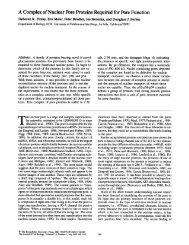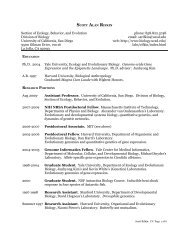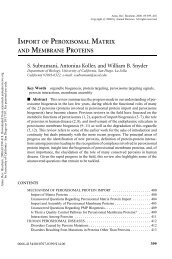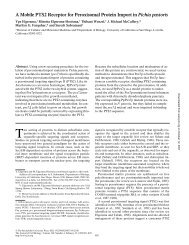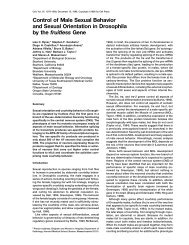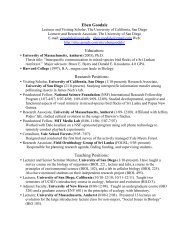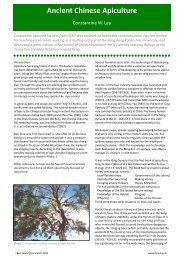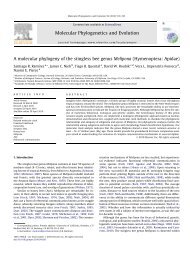Bee Basics - USDA Forest Service - US Department of Agriculture
Bee Basics - USDA Forest Service - US Department of Agriculture
Bee Basics - USDA Forest Service - US Department of Agriculture
Create successful ePaper yourself
Turn your PDF publications into a flip-book with our unique Google optimized e-Paper software.
As best as you can, try not to apply the pesticide to the flowers. Doingso will keep visiting pollinators from sipping contaminated nectaror carrying <strong>of</strong>f contaminated pollen. Avoiding the use <strong>of</strong> pesticidesmay be a reasonable choice in some cases. Nature has its own checksand balances and manages to keep most pests under control withoutgardeners having to resort to pesticides. Remember, some damage toplants is part <strong>of</strong> the ecology <strong>of</strong> your garden.• Provide a source <strong>of</strong> pesticide-free water and mud. A dripping faucet,mud puddle, or birdbath attracts butterflies and beneficial insects.Mud is an important nesting material for some bee species. Providinga clean source <strong>of</strong> water for birds and other pollinators limits theirexposure to possible toxins in the garden.• Plant native plants from your ecoregion.Using locally native flowering plants is thebest gardening you can choose to benefityour local pollinators. Native pollinators andnative plants have become mutually adaptedthrough millions <strong>of</strong> years <strong>of</strong> partnershipwith one another. Plant-pollinator partnersexist in your ecoregion. Finding and plantingthe right plants makes a huge difference forpollinators.• Provide a variety <strong>of</strong> native floweringtrees, shrubs, and wildflowers that bloomsuccessively throughout the seasons.Fortunately this is exactly what mostgardeners aspire to have in their gardens.Many highly selected cultivars don’t providefor the needs <strong>of</strong> pollinators. In most cases,they have lost the floral cues that attractpollinators to their flowers. In some cases,these improved cultivars no longer producepollen or nectar and as such do not provideany food to bees. Using native plants alsorequires less care as they are adapted to local climates. Using nativeplants can be easy on the pocket book. Many modern cultivars andnonnative plants such as many <strong>of</strong> the roses require a great deal <strong>of</strong> timeand money to care for them. Think <strong>of</strong> the flowers your grandmotherused in her garden as a practical guide, especially when usingnonnative plants. The pollinators will thank you.33



